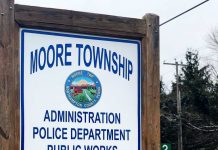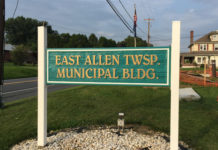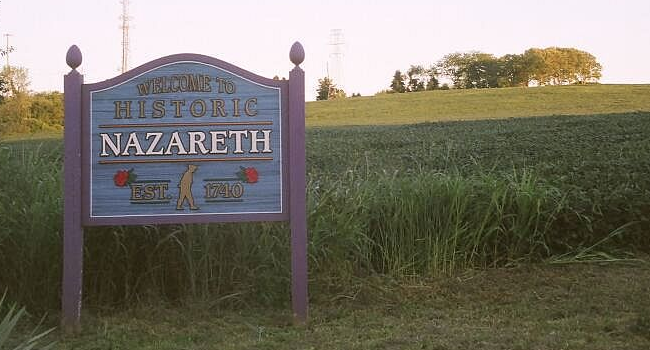
Originally published in 2002
This week we look back at the history of Chapman’s Borough, one of the most interesting communities in our Commonwealth. I visited there and interviewed a number of borough residents. Reverend Kenneth Klingborg and the Chapmans Quarries Historical Society have granted me the permission to use some of their research to tell their proud story.
William Chapman came to the United States in 1842. He brought with him a treasure of slate quarry experience. After extensive research he purchased an area containing some prime slate deposits. Thus was born the Chapman Slate Company. This quarry began operations in 1850.
Mr. Chapman resided in Bethlehem and was a member of the Episcopalian church. He died in 1902. His half brother Richard came to America in 1862 and four years later became superintendent of the Chapman Slate Company. The beautiful Chapman house with its Victorian gingerbread woodwork can be seen on Main Street. It is presently owned by Franklin Silfies.
The community founded by the Chapman’s was incorporated as a borough on October 25, 1865. An unpleasant task confronted the new borough in 1866, assessment. I know our readers just love the term. The first assessment was compiled by John Jones. In looking over the list there is a preponderance of English and Welsh names along with a number with Pennsylvania German. The most common names were Jones and Williams as Richard Jones, John Jones, Abraham Jones, Roland Jones, Hugh Jones and David Jones. Williams names listed were William Williams, Richard Williams, Matthew Williams, William J. Williams, William R. Williams and Michael Williams. A number of first names were interesting. Do you know anyone named Lodinous or Edwintes?
In 1910 the population peaked at 700. As in the coal regions, Chapman’s was a company town with company homes, company store, post office, hotel and railroad station. There was an early German Brethren church and a United Methodist Church. The Methodist Church dates back to 1868. Although the Chapman’s were Episcopalians, they realized most of the slaters had roots in England and the Methodist Church, so they decided it was imperative to have a Methodist church in Chapman’s. They supported the church by providing land and building materials. The church was constructed next to the present borough hall and the cemetery.
In the late 1800s the Chapman’s contacted the church and told them they needed the land for quarry expansion, but they had a solution to the problem, which I am sure was very upsetting to the congregation. Remember most of the residents of Chapman’s were church members?
The Chapman’s donated the plot of land where the present edifice graces Main Street. The original church was dismantled board-by-board, slate-by-slate. Everything, bell, molding was moved down Main Street. Pastor Klingborg said, “Some of the slate of the present church are from the old church. It proves what the slate workers always said, ‘Chapmans Slate is the best you can buy at any price.’” We’ll be visiting the church in a future article.
Next time: Memories with Mr. Clyde Roberts.
We’re sad to see the passing of a friend and former mayor of Chapman’s Quarries, Mr. Harold “Sonny” Kocher.








